
Text and picture/Wang Yuanchang
The year is gone with the sound of firecrackers, and the spring breeze brings warmth to the summer. Thousands of doors and thousands of households are in a bright sun, and they always replace the old charms with new peaches.
——”New Year’s Day” by Wang Anshi of the Song Dynasty
In the Lunar New Year, different regions have different folk customs; different families have different expectations. But the feelings rooted in the heart and praying for a better life are interconnected and difficult to change. The artistic expression that carries the profound feelings of Yan and Huang, interprets the folk customs and beautifies people’s lives, is indispensable for colorful New Year pictures.
The origin of Chinese New Year paintings can be traced back to the patron sacred paintings of the Qin and Han Dynasties or earlier, including Tao Talismans, Zhong Kui statues, Tianxing posts, etc. In the Song Dynasty, Komiks 1960 witch cloth draw, with the rise and maturity of woodblock printing technology, New Year’s paintings gradually evolved from patron sacred paintings to colored and colored woodblocked New Year’s paintings, which was the first precedent for woodblock New Year’s paintings in the history of Chinese painting.
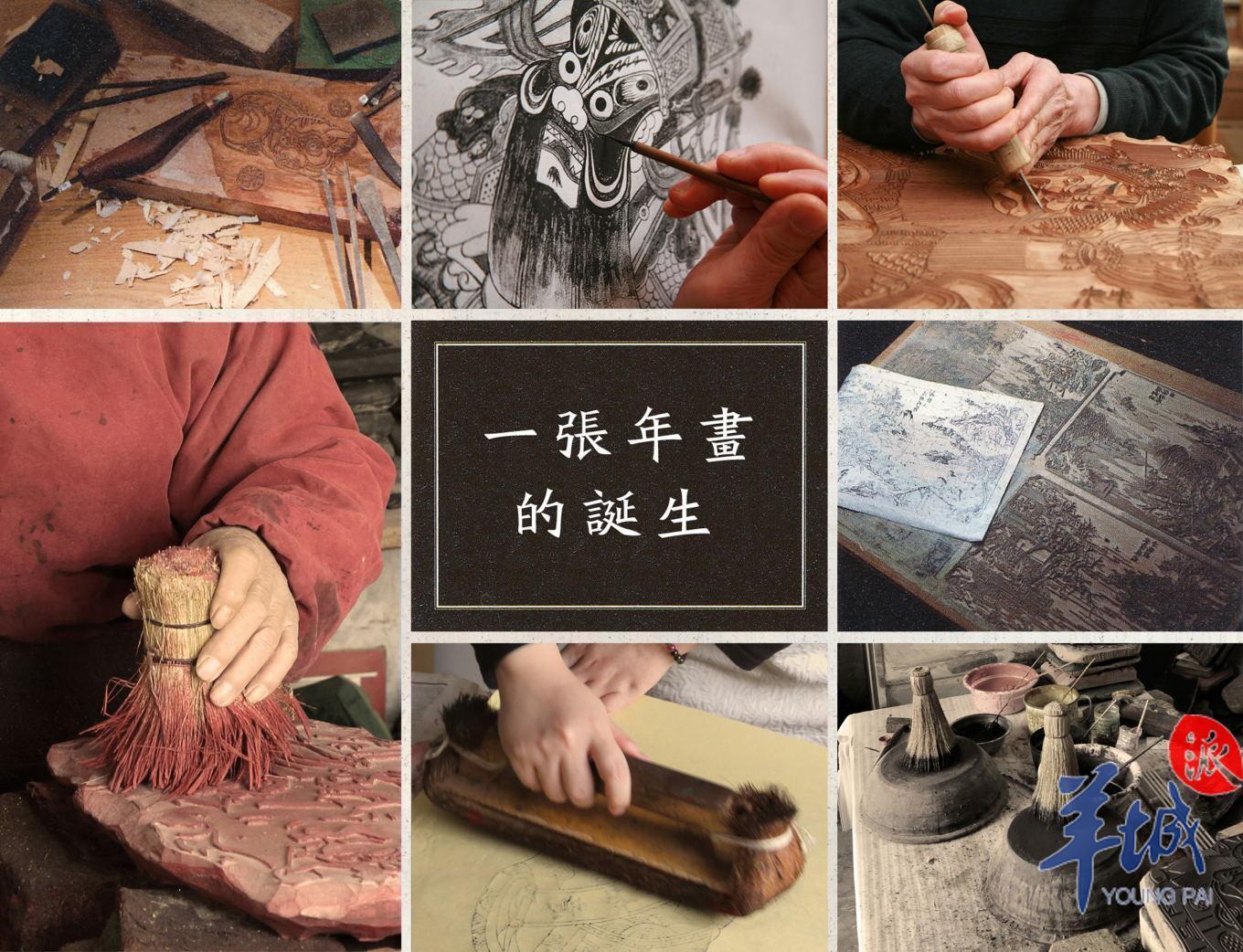
In recent years, there have been woodblock New Year pictures from 17 major domestic production areas including Tianjin Yangliuqing, Jiangsu Suzhou, Shandong Weifang, Sichuan Mianzhu, Henan Kaifeng, Shaanxi Fengxiang, and other 17 domestic intangible cultural heritage list.
In my more than ten years of searching for New Year’s paintings, I discovered that the birthplace of Chinese wood-based New Year’s paintings, the New Year’s paintings in “Zhuxian Town” in Kaifeng, have a strong aroma of yin and yellow, full of emotions, and vivid folk customs.
The Suzhou Taohuawu and Tianjin Yangliu Youth Paintings, which are praised by the world as “Taohuawu in the south and willows in the north and south, are the most dazzling. They create based on real life, highlighting the character characteristics of the characters, and the pictures are prosperous and lively, full of expressiveness and attractiveness.
Today, woodblock New Year pictures with a long history and can be regarded as a classic Chinese cultural heritage have been picked up again by more and more people, from posting on the four walls of the house in the past to exquisitely produced and framed works of art, bidding farewell to the old and welcoming the new, including daily housewarming, newlyweds, etc., and setting up hanging hall shops.
Especially, some courtyard houses in the streets and alleys of the New Year pictures are produced, “always replace new peaches with old charms”, the New Year pictures hanging in the hall and the door gods posted outside the two courtyard doors form a beautiful New Year scenery with Jirui’s Fu couplets and festive red lanterns. It demonstrates people’s yearning for a better life and exudes the inseparable beauty in the hearts of the people.
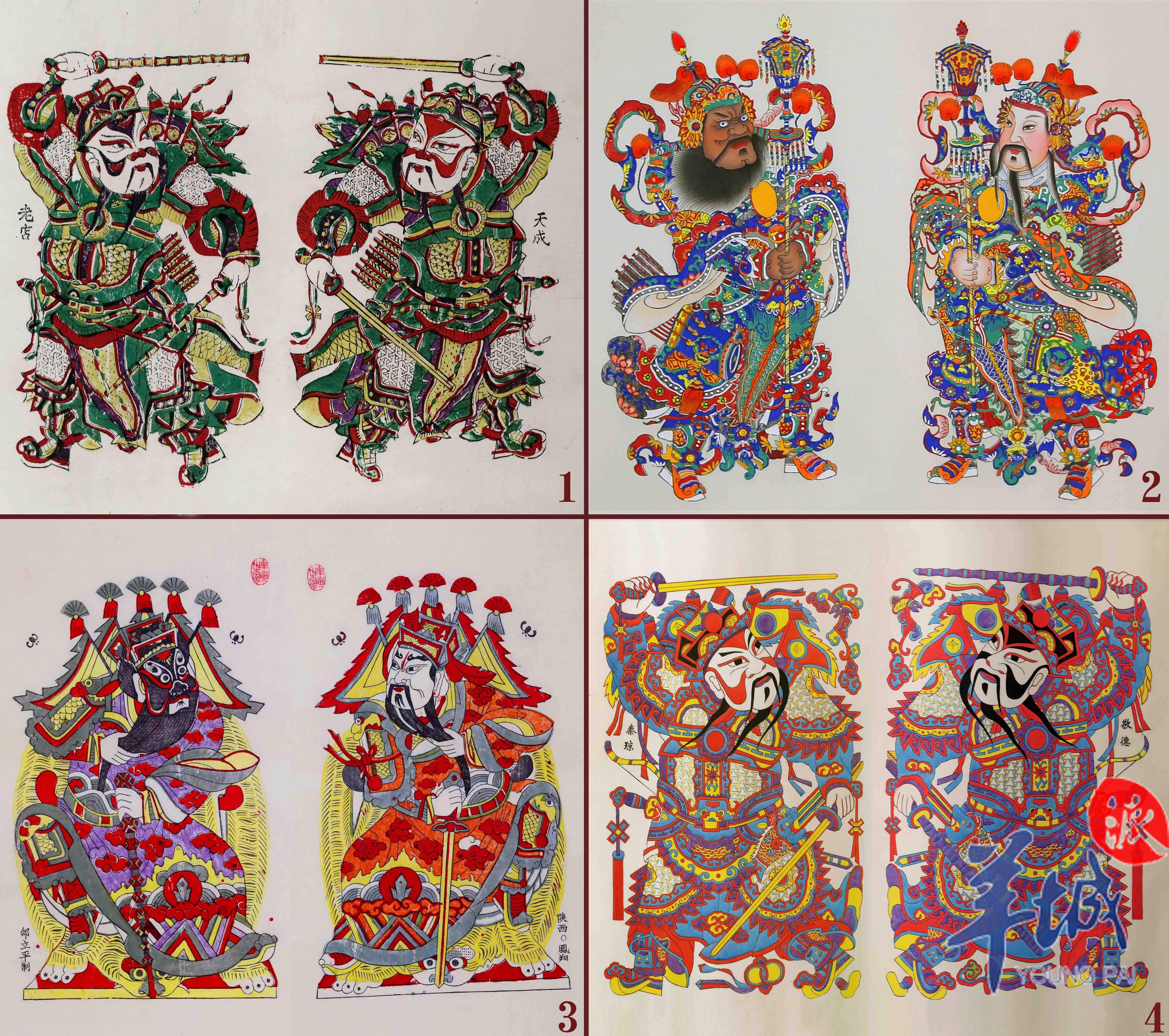 The earliest form of New Year’s painting is Babaylan 1990 cloth drawThe door painting posted on the door in the New Year is the “door god”. The colors and techniques are different in different regions. Figure 1 shows the door god New Year painting created by Yin Guoquan, the national inheritor of Zhuxian Town woodblock New Year painting; Figure 2 shows the door god New Year painting of Yang Liuqing; Figure 3 shows the door god New Year painting created by Tai Liping, the national inheritor of Fengxiang woodblock New Year painting; Figure 4 shows the door god New Year painting created by Yang Fuyuan, the national inheritor of Yangjiabu woodblock New Year painting.
The earliest form of New Year’s painting is Babaylan 1990 cloth drawThe door painting posted on the door in the New Year is the “door god”. The colors and techniques are different in different regions. Figure 1 shows the door god New Year painting created by Yin Guoquan, the national inheritor of Zhuxian Town woodblock New Year painting; Figure 2 shows the door god New Year painting of Yang Liuqing; Figure 3 shows the door god New Year painting created by Tai Liping, the national inheritor of Fengxiang woodblock New Year painting; Figure 4 shows the door god New Year painting created by Yang Fuyuan, the national inheritor of Yangjiabu woodblock New Year painting.
Zhuxian Town, Kaifeng
Having a precedent for woodblock New Year painting
In ancient times, Zhuxian Town was ranked one of the “Four Major Ancient Towns in China”. What made its reputation famous was the woodblock New Year paintings that were popular here and passed down through the ages. Zhuxian Town Woodblock Cinema 1950 witch cloth draw As an outstanding representative of traditional Chinese art, New Year paintings were included in the first batch of national intangible cultural heritage list.
The day I went to Zhuxian Town, I was caught up with a rare heavy snowfall in Kaifeng. The flying snowflakes in the sky made the morning of the ancient town less noisy, and the sight of some shops and vendors cleaning the snow in front of the door. This ancient town that has been covered with wind and rain for thousands of years cannot imagine its glory.
The Yuewang Temple, which was built here during the Ming Dynasty, is located on the side of Yuemiao Street. It is a wooden New Year painting street in the ancient town. Now many old wooden New Year painting brands have been restored. On this old street, you can not only feel the charm of traditional wooden New Year paintings, but you can buy valuable works by your favorite New Year painting craftsmen for a few dozen yuan.
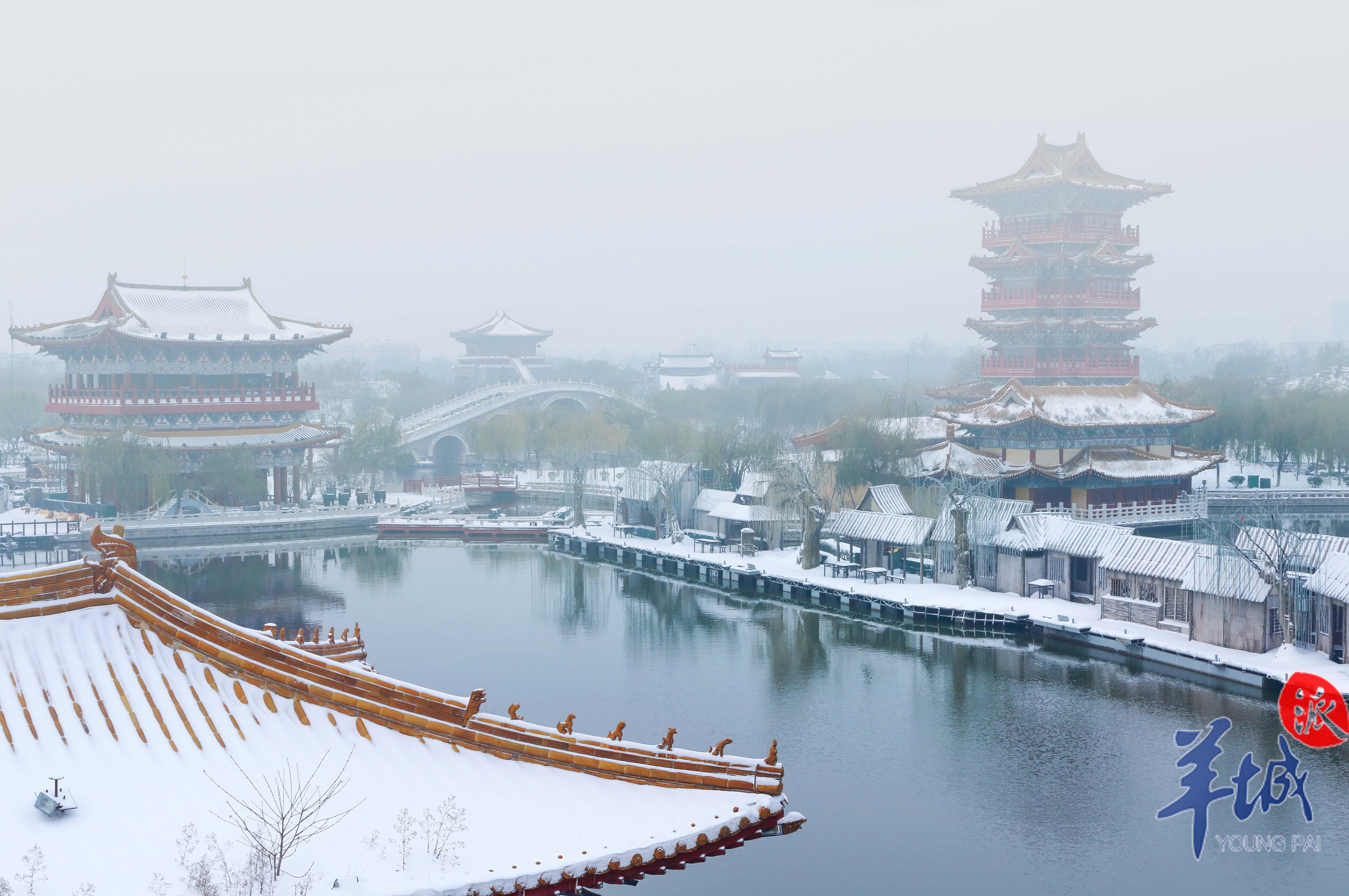
According to historical records, Zhuxianzhen woodblock New Year paintings, known as the “ancestor of Chinese woodblock New Year paintings”, was born in the Tang Dynasty and flourished in the Song Dynasty. It reached more than 300 New Year painting workshops during the Ming and Qing Dynasties. The opening of the canal made Zhuxian Town a commercial center in the Central Plains, and the sales of New Year pictures flourished. Many customers from Shandong, Jiangsu, Anhui, Fujian, Ningxia and other districts now.The domain gathers here and buys two-thirds of the country’s New Year pictures.
The prosperity of woodblock New Year paintings in Zhuxian Town is inseparable from the fertile land of Kaifeng. Kaifeng during the Northern Song Dynasty was the center of politics, economy and culture in the country. The huge urban class activated the demand for folk culture and provided a rich soil and market for the creation of New Year pictures.
Meng Yuanlao’s “Dream of Tokyo” records that “in recent years, the market has printed door gods, peach boards, peach talismans, etc..” The “Along the River During the Qingming Festival” depicting the social life of the Northern Song Dynasty, and the guise of the “Wang Family Paper Horse” shop near the beginning of the volume is clearly identifiable.
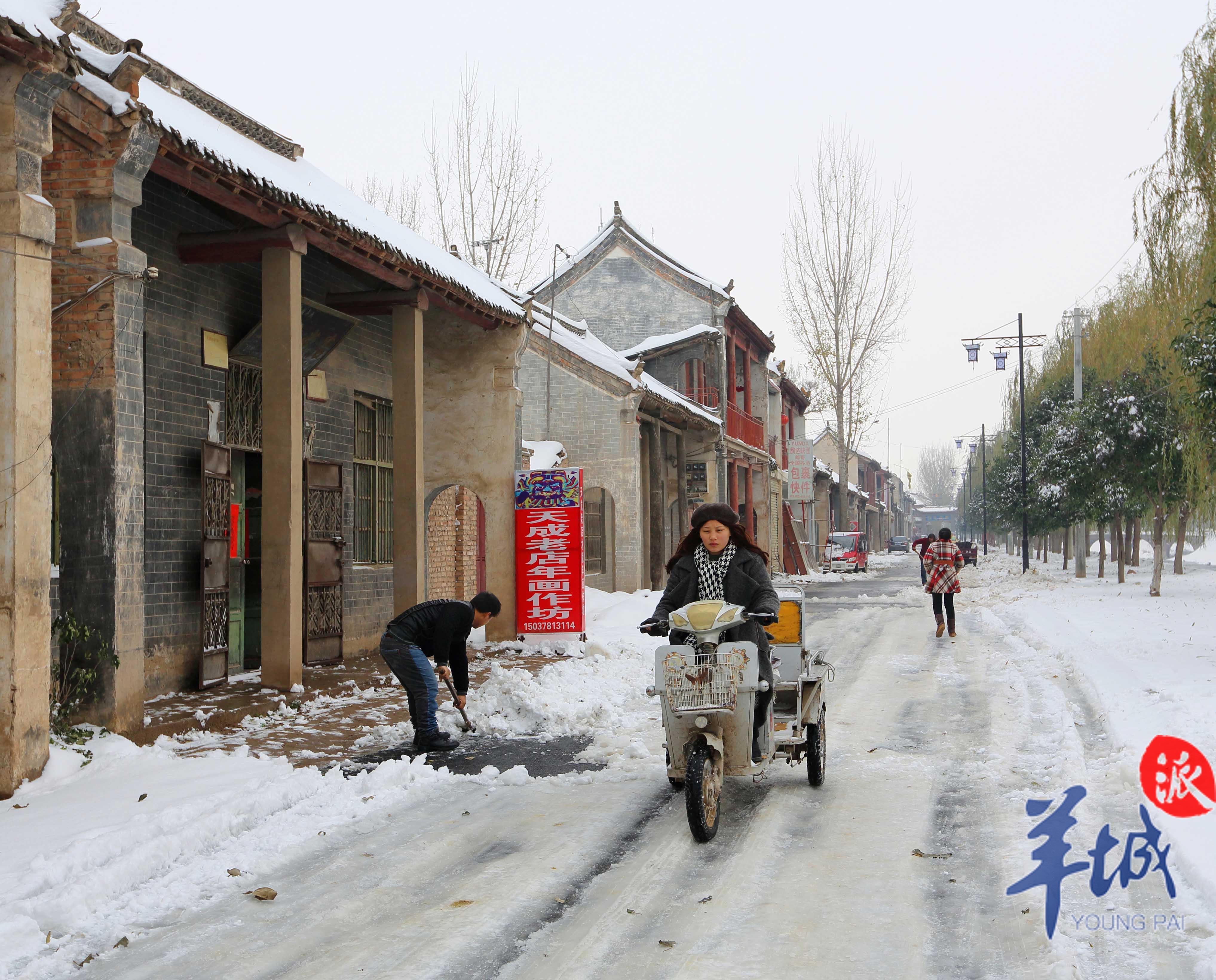
Strive on a New Year Painting Street close to the ancient canal, the old houses on both sides are mottled, and the rugged eaves show the vicissitudes of the years it has experienced, and the original flavor is soaked in nostalgia.Komiks 1960 witch cloth draw.
The second floor pavement is highKomiks 1960 witch cloth draw holds up the “protect” with black background and yellow characters, and writes “Tiancheng Old Store”. There is no decoration in the old house with peeling paint. The four walls are full of New Year pictures, including the mighty door god, the iron-faced and curly bearded Zhong Kui’s head, the five sons win the championship, the pine crane prolongs life, the lotus gives birth to a noble son and other representative themes.
Yin Guoquan, the fifth generation descendant of “Tiancheng Old Shop”, was dressed simply, sitting in front of the stage where various colors of paints were piled up. With the help of his grandson, he repeatedly applied different paints and printed New Year pictures in color. It took the old man a month to place a newly-engraved carving version on the stage.
The iron rack next to it is full of colorful greenery, and the New Year pictures that have just been printed and dried are very beautiful. Behind the counter is Mr. Yin’s wife, and the production desk is connected to the counter, a typical traditional workshop.
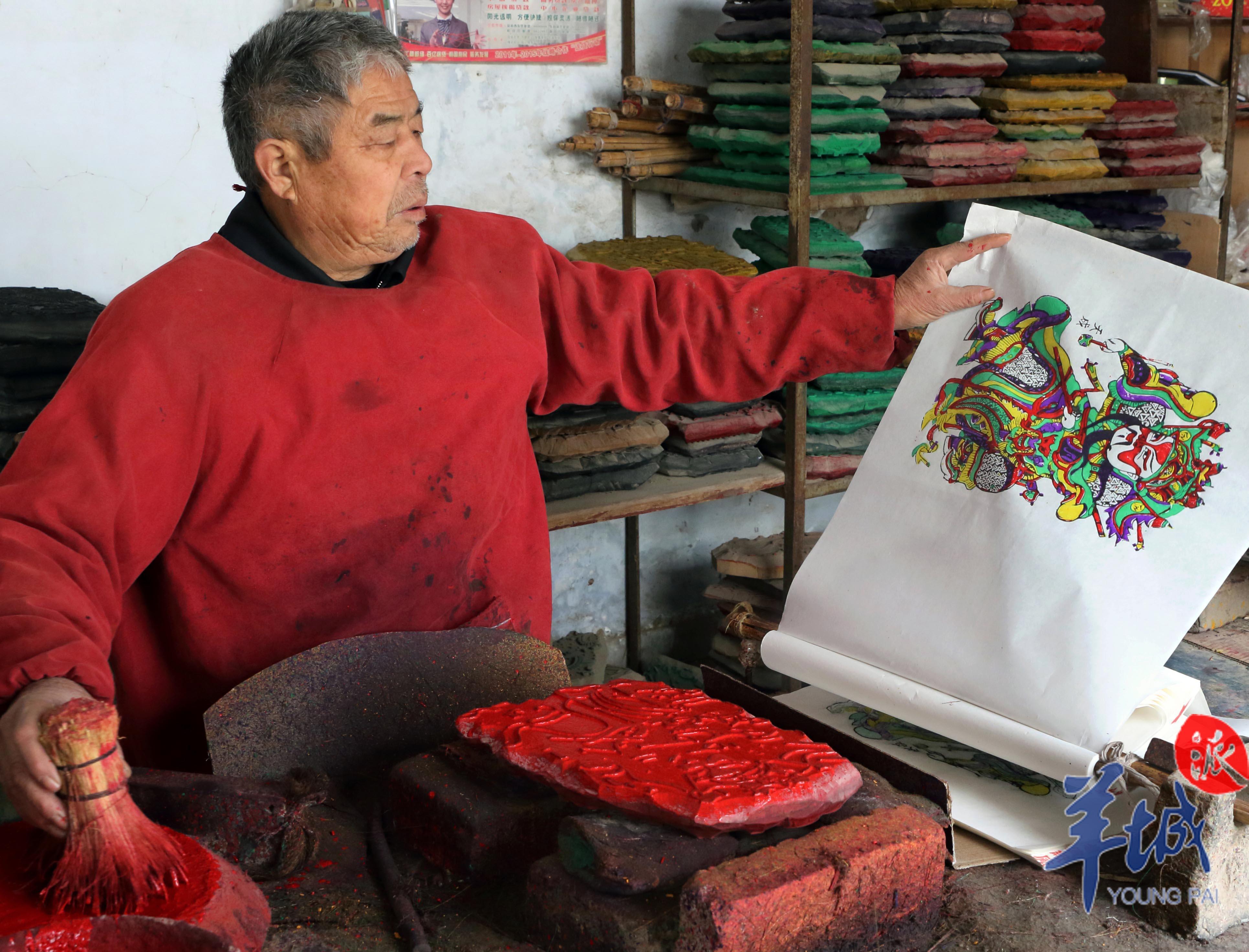 The peak period of New Year’s picture production begins in early December every year. The picture shows Yin Guoquan, who is fully focused on printing New Year pictures. In Yin Guoquan’s view, the truly authentic traditional skills are in danger of losing. Over the past few decades, he inherited and created more than 300 sets of carved versions of Babaylan 1990 cloth draw., more than 1,500 yuan. He said: “The paints I printed in New Year’s paintings are carefully processed and cooked with plants such as pine smoke, locust rice, and Zhangdan. Although it takes time and effort, it is more colored than the current industrial pigments.” “The things passed down by the older generation cannot be lost. My two sons and grandsons are heirs.” Looking at his hands that are slightly rougher than ordinary people, and the wrinkles on his face being gullyed by the years, a kind of shock filled his heart.
The peak period of New Year’s picture production begins in early December every year. The picture shows Yin Guoquan, who is fully focused on printing New Year pictures. In Yin Guoquan’s view, the truly authentic traditional skills are in danger of losing. Over the past few decades, he inherited and created more than 300 sets of carved versions of Babaylan 1990 cloth draw., more than 1,500 yuan. He said: “The paints I printed in New Year’s paintings are carefully processed and cooked with plants such as pine smoke, locust rice, and Zhangdan. Although it takes time and effort, it is more colored than the current industrial pigments.” “The things passed down by the older generation cannot be lost. My two sons and grandsons are heirs.” Looking at his hands that are slightly rougher than ordinary people, and the wrinkles on his face being gullyed by the years, a kind of shock filled his heart.
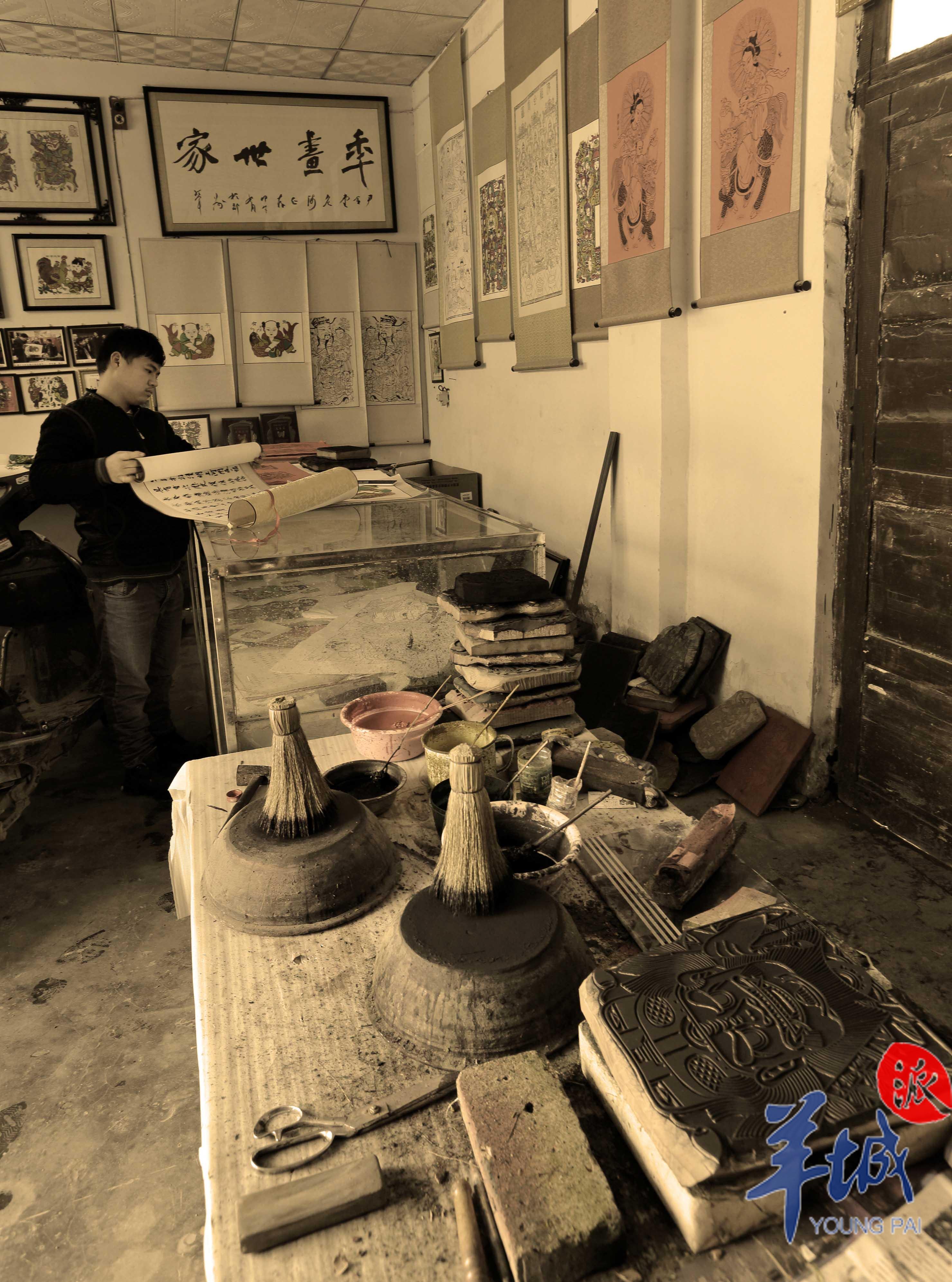 The “Tiancheng Old Shop” connected to the counter of the production stand is full of vicissitudes of time. The content of the woodblock New Year pictures in Zhuxian Town is mostly based on familiar historical stories, myths and legends. The printing technique is mainly woodblocked water color overprinting, six-page set, and some sets are as many as nine-page. The colors of red, yellow, green and purple are bright and exaggerated. The character has a big head and a small body, looking rustic and cute. Most characters use white faces and red eyelids on their faces, which is its unique technique and is also the representative style of Zhuxianzhen woodblock New Year pictures.
The “Tiancheng Old Shop” connected to the counter of the production stand is full of vicissitudes of time. The content of the woodblock New Year pictures in Zhuxian Town is mostly based on familiar historical stories, myths and legends. The printing technique is mainly woodblocked water color overprinting, six-page set, and some sets are as many as nine-page. The colors of red, yellow, green and purple are bright and exaggerated. The character has a big head and a small body, looking rustic and cute. Most characters use white faces and red eyelids on their faces, which is its unique technique and is also the representative style of Zhuxianzhen woodblock New Year pictures.
The vigorous and ancient lines, simple and symmetrical patterns, and the rough and thick atmosphere reflect the strong local art style of Zhuxian Town, the hinterland of the Central Plains. Mr. Lu Xun once commented on Zhuxian Town woodblock New Year paintings, “These woodblocks are simple, with thick and powerful engravings, and they are not stained with powder. The characters are not charming, the colors are strong and very local.”
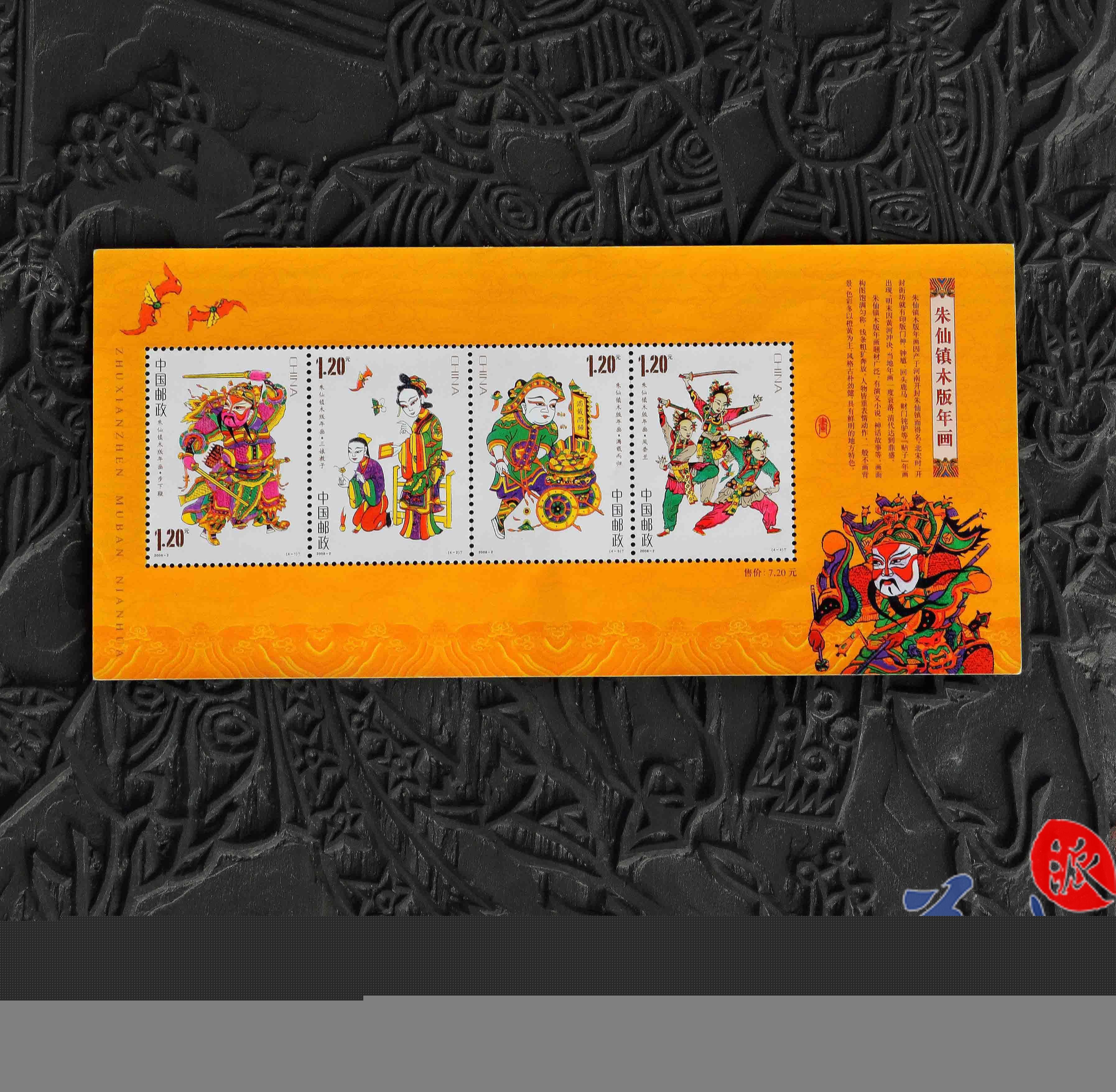 The special stamp of “ZhuCinema 1950 witch cloth drawXianzhen woodblock New Year paintings” issued in 2008, the content is taken from the classic story, Sanniang teaches her children, return home with a full load, and Feng Xianglan
The special stamp of “ZhuCinema 1950 witch cloth drawXianzhen woodblock New Year paintings” issued in 2008, the content is taken from the classic story, Sanniang teaches her children, return home with a full load, and Feng Xianglan
Opened to the public in 1998Cinema 1950 witch cloth drawXianzhen woodblock New Year paintings”, which is taken from the classic story, Sanniang teaches her children, return home with a full load, and Feng Xianglan
Opened to the public in 1998<a The real-life theme park Qingming Shanghe Park of Babaylan 1990 cloth draw is located on the west bank of Longting Lake in Kaifeng City. It is a large historical and cultural park with the theme of Song culture as a model of the realistic painting "Along the River During the Qingming Festival" by Northern Song painter Zhang Zeduan, and is now a 5A scenic spot.
The Zhuxian Town woodblock New Year pictures are sold all year round. You can learn about the traditional woodblock New Year pictures production in the retro New Year pictures store. Visitors can not only appreciate and purchase, and can also participate in the interaction on site.
 Cinema 1950 witch cloth draw Zhuxian Town woodblock New Year pictures with rich local characteristics, red, yellow, green and purple colors are bright and thick, the characters are exaggerated, with a big head and a small body, looking rustic, and cute. SuzhouKomiks 1960 witch cloth drawTaohuawu
Cinema 1950 witch cloth draw Zhuxian Town woodblock New Year pictures with rich local characteristics, red, yellow, green and purple colors are bright and thick, the characters are exaggerated, with a big head and a small body, looking rustic, and cute. SuzhouKomiks 1960 witch cloth drawTaohuawu
carrying beautiful expectations
The ancient city of Suzhou is gentle and colorful and lasting for thousands of years, giving Taohuawu a woodblock New Year painting a brilliant character. During the Yongzheng and Qianlong periods of the Qing Dynasty, Babaylan 1990 cloth draw was the most prosperous period of Taohuawu New Year paintings. Hundreds of painters and printing craftsmen gathered here. New Year paintings were sold to Southeast Asia, and “Taohuawu” became synonymous with Suzhou woodblock New Year paintings.
Looking through some books recording Suzhou’s cultural tourism or walking in historical districts such as Shantang Street and Pingjiang Road, you can see the shops of “Taohuawu New Year Pictures”. There is also a Taohuawu Street in Suzhou, which is a stone road that is not wide. Houses with pink walls and black tiles are arranged on both sides. The hanging lanterns and Spring Festival couplets exude the joy of the New Year.
In the shops on Taohuawu Street, it is not difficult to find the shadow of New Year pictures. In Puyuan on Xiaochangqiao Road, which intersects Taohuawu Avenue, the Taohuawu Woodcut New Year Painting Museum was found. Walking in, a fresh and elegant garden comes into view, and the New Year Painting Museum is quietly hidden in the lush green shade Cinema 1950 witch cloth draw.
 Small bridges and flowing water in Suzhou can be used in paintings
Small bridges and flowing water in Suzhou can be used in paintings
The museum currently collects hundreds of ancient New Year painting collections. Babaylan 1990 clothes draw, Magu’s birthday pictures, double beauty love flowers, and Gusu Xuanmiao Temple and other rare items are displayed. Real scene display departmentIn the living room, there are “Three Stars Highlights” and “Eight Immortals Crossing the Sea”, which means that there are all guests; in the bedroom, there are “Flowers bloom and wealth” and “Given a Premature Children” and “Given a Premium” to indicate the harmony of couples. These New Year pictures that reflect the living conditions of the people in ancient times are loved by modern people.
I saw a table with engraving, engraving platform, printing platform, brown brush, brown rub, fist knife and other engraving tools. Several masters in their early thirties were engraving meticulously. Holding the knife in his right hand, skillfully carving lines on the woodblock, sweat oozing out of the tip of his nose, but he didn’t care to wipe it off. His concentration looked like he made the most precious treasure in the world.
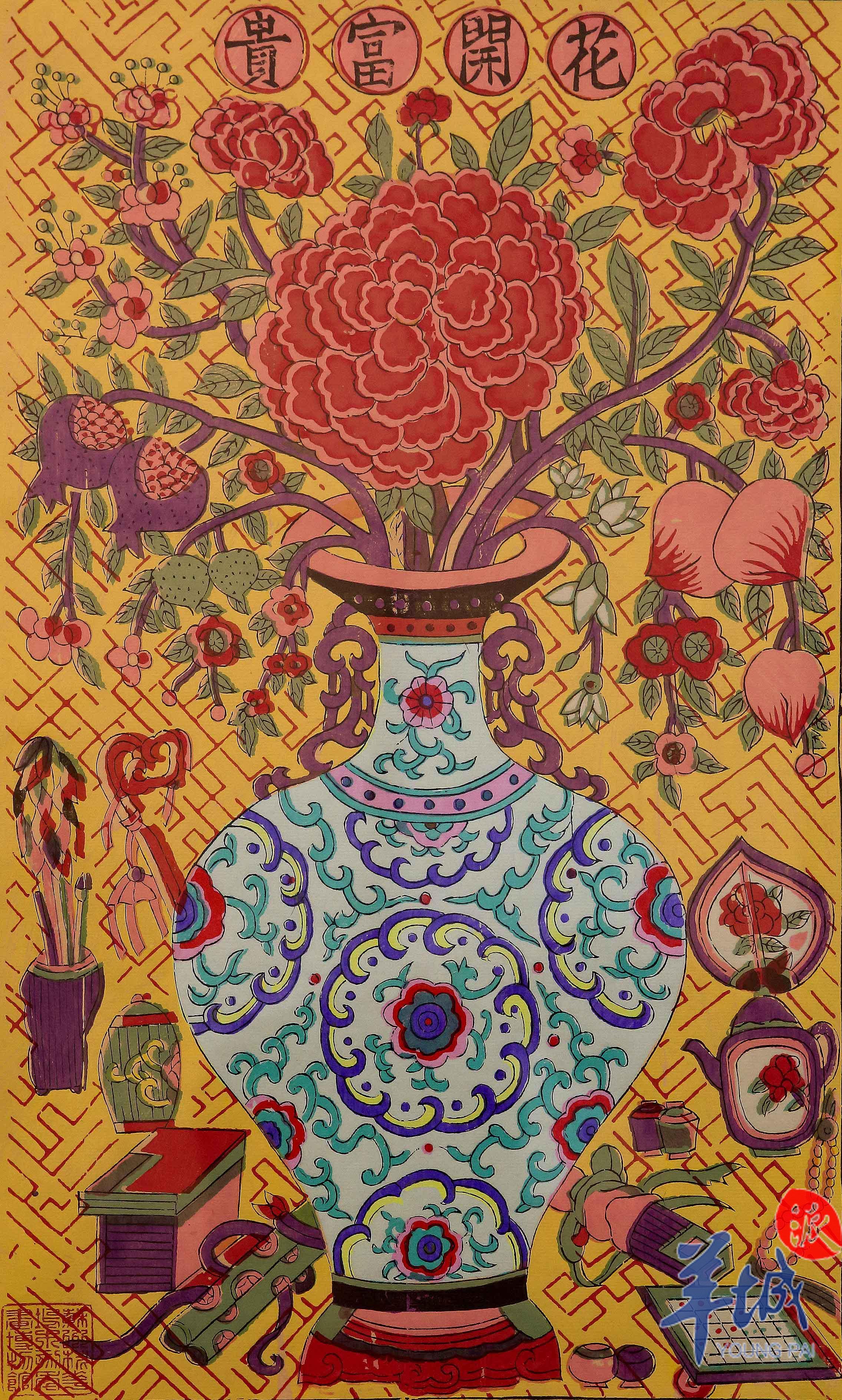 The antique Taohuawu historical classic woodblock New Year painting “Flowers Bloom and Rich”
The antique Taohuawu historical classic woodblock New Year painting “Flowers Bloom and Rich”
According to reports, a Taohuawu woodblock New Year painting is not completed by a painter alone. It requires three steps: painting, engraving and printing, and is created by a collective creation. Compared with New Year pictures in other regions, the characteristic of Taohuawu New Year pictures is that they rely entirely on plate printing. After printing, they do not write a stroke, and they are good at engraving.
A fist knife that is just clenched by the palm can evolve into four methods: starting knife, placing knife, picking knife, and re-knife. It pays attention to “firmly launching the knife, picking the knife, and shoveling the bottom”. The lines should be natural and vigorous, clean and neat. Generally speaking, it takes 5 years to learn the paintings of Taohuawu New Year paintings, 4 years to engrave the printing, and 2 years to print.
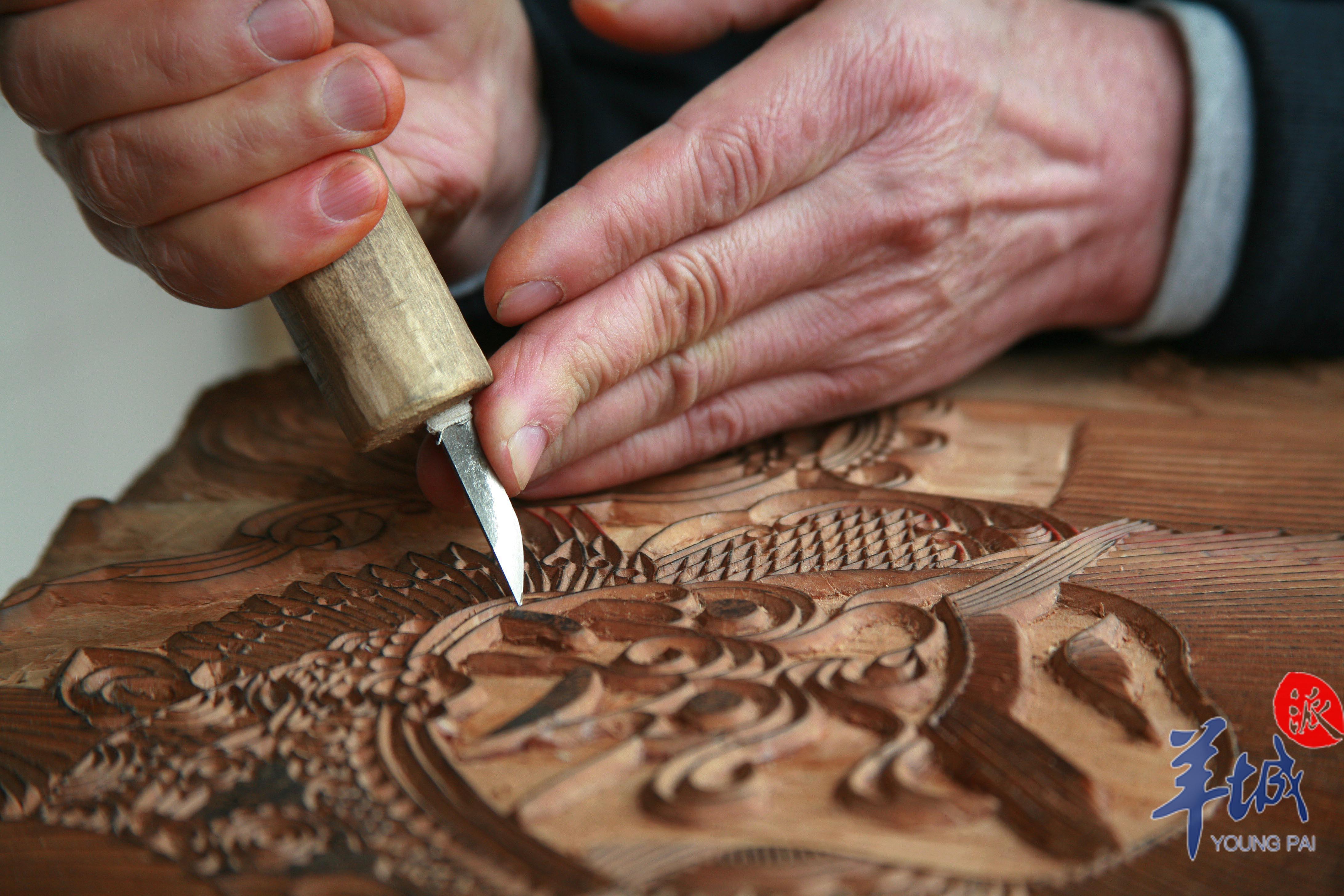 One of the main steps of traditional Chinese woodblock New Year paintings. In early 2008, a New Year painting “A Mutual Qi” created during the Yongzheng period of the Qing Dynasty was successfully copied in Puyuan. This can be called the pioneering work of Taohuawu New Year paintings. “A Mutual” warns the people of the palace to live in harmony and spread to the people’s desire to unite and fulfill their wishes.
One of the main steps of traditional Chinese woodblock New Year paintings. In early 2008, a New Year painting “A Mutual Qi” created during the Yongzheng period of the Qing Dynasty was successfully copied in Puyuan. This can be called the pioneering work of Taohuawu New Year paintings. “A Mutual” warns the people of the palace to live in harmony and spread to the people’s desire to unite and fulfill their wishes.
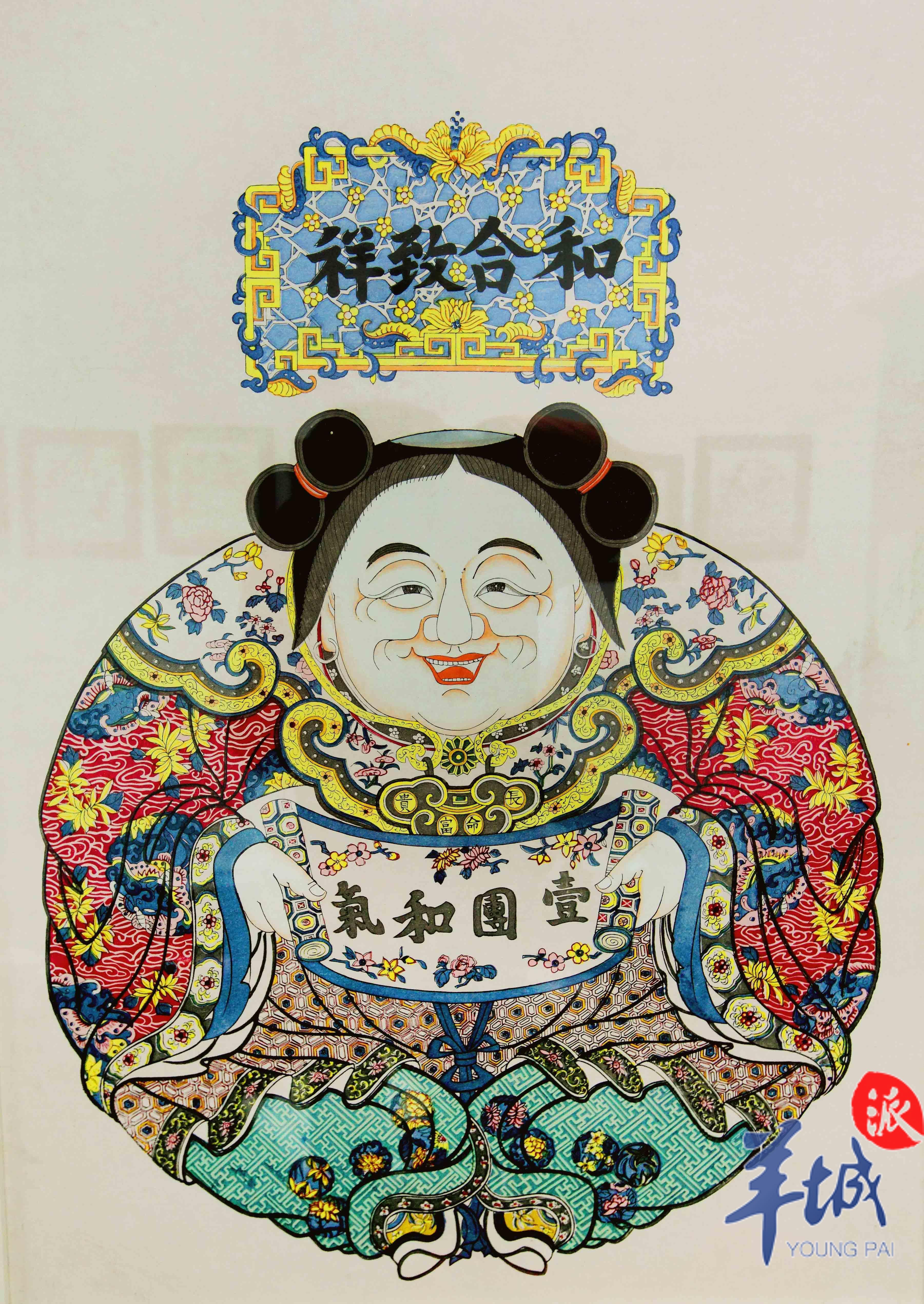 《A Mutual Qi” is one of the representative works of Taohuawu woodblock New Year paintings
《A Mutual Qi” is one of the representative works of Taohuawu woodblock New Year paintings
Since history, Taohuawu woodblock New Year paintings have carved a unique folk custom, that is, from content to social effects, called woodblock New Year paintings, but not limited to New Year postings and hangings. Instead, in accordance with the seasons, when different festivals and solar terms come every year, woodblock New Year paintings should be used to express different beautiful expectations.
For example, when bidding farewell to the old and welcoming the new, “Happy Picture” should be posted at the beginning of spring; when the Mid-Autumn Festival, “Moon Palace Picture” should be posted… and the new year is here again.
Tianjin Yangliuqing
So deeply influenced by multiculturalism
During the Spring Festival, when we came to Yangliuqing Town, Xiqing District, Tianjin, an antique buildings with carved beams and painted buildings immediately came into view. The frozen ancient canal quietly “hibernates” in the town, and several beautiful arch bridges span the ice surface.
Tianjin Yangliuqing, surrounded by Ziya River, Nan Canal and Daqing River, was an important terminal for north-south cargo circulation and overseas trade during the Ming and Qing dynasties. Yangliuqing woodblock New Year pictures are therefore deeply influenced by multiculturalism.
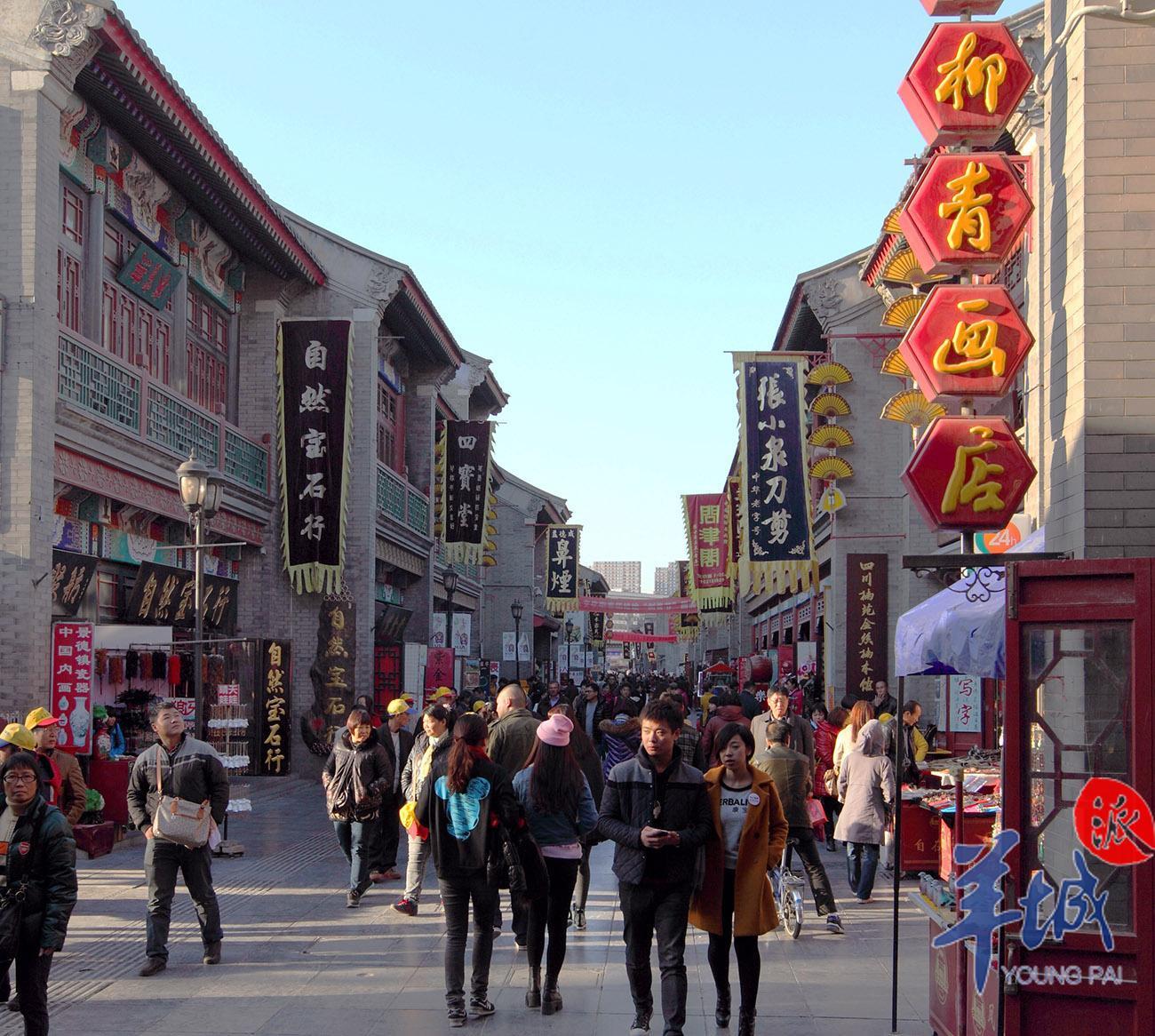 Tianjin Ancient Cultural Street is a Scenery
Tianjin Ancient Cultural Street is a Scenery
According to historical records, Yangliuqing painting first appeared in the Wanli period of the Ming Dynasty, and reached unprecedented prosperity during the Qianlong period of the Qing Dynasty. In 1958, the state established the Yangliuqing Painting Club to rescue the New Year painting art, collected and organized Yangliuqing Painting, and cultivated a group of excellent New Year painting artists.
In recent years, with the prosperity of the reform and opening up and the prosperity of the cultural and tourism market, the demand for Yangliuqing Painting has expanded, making this ancient folk art return to the lives of the people. At the same time, Yangliuqing Painting has also entered the international art sales and collection market.
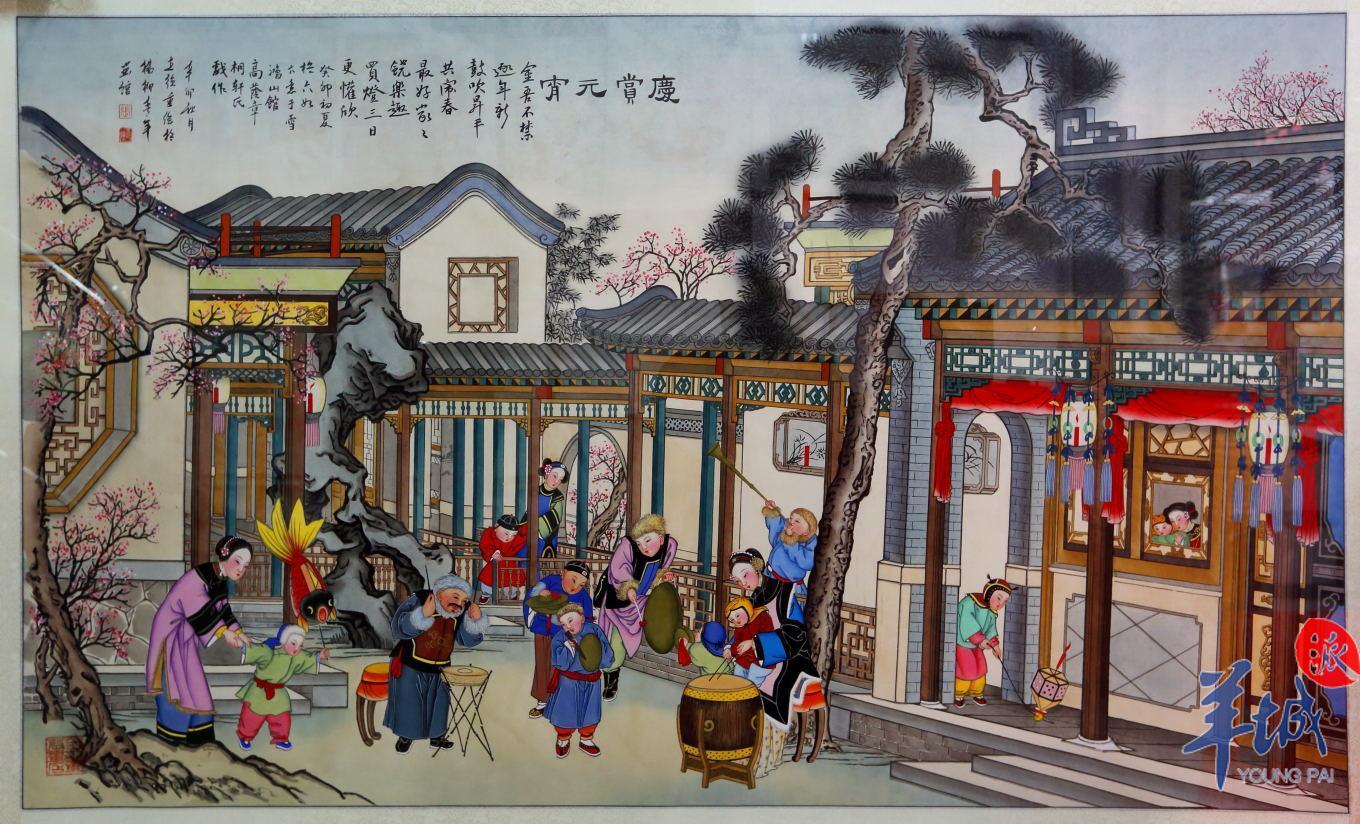
If Taohuawu New Year paintings are like implicit and beautiful beauty, then Yangliuqing New Year paintings are lively and straightforward men. From the picture of fat dolls holding carp and lotus in hand to the three-star picture of good fortune and longevity, a unique style of vivid, lively, joyful and full of emotions was created.
Yangliuqing New Year paintings inherited the tradition of Song and Yuan paintings, and absorbed the forms of woodcuts, arts and crafts, and drama stages in the Ming Dynasty. The early craftsmanship was basically the same as Taohuawu New Year paintings, and both used stereotyped overprints; in the post-production, it took a lot of time to be used for hand-painting.
 Yangliuqing Nian Painting Five Sons and Lotus was once selected as a stamp.
Yangliuqing Nian Painting Five Sons and Lotus was once selected as a stamp.
A New Year’s painting requires five main processes: drawing, carving, woodblock overprinting, hand-painting, and mounting, plus more than three monochrome overprinting. Because of the combination of printing and painting, it has a quiet, elegant and lively visual effect, which is beyond the reach of other folk New Year’s paintings.
The content of the picture is mainly folk life, fat dolls, maids and historical stories. The most classic one is “After more than a year, Babaylan 1990 clothes Draw》, the baby face and Buddha body in the painting, the playful posture and martial arts frame, the Babaylan 1990 cloth draw carp, holding a lotus in his hand, catering to the folk’s beautiful wishes of “praying for blessings and blessings” and “more children and more blessings”.
 Yangliuqing Door God New Year’s Paintings
Yangliuqing Door God New Year’s Paintings
On the antique Ming and Qing streets, Yuchengha, Yichengyong, Guliuxiang, Huayunzhai and others are dazzling. New Year’s painting workshops one by one, and there are more than 60 New Year’s painting production workshops and sales stores in Yangliuqing Town. It is one of the best New Year’s paintings that have been restored. It seems that it has returned to the scene of “drawing every family and painting every household” during the Qianlong period of the Qing Dynasty. Tourists buying New Year’s paintings are constantly coming.
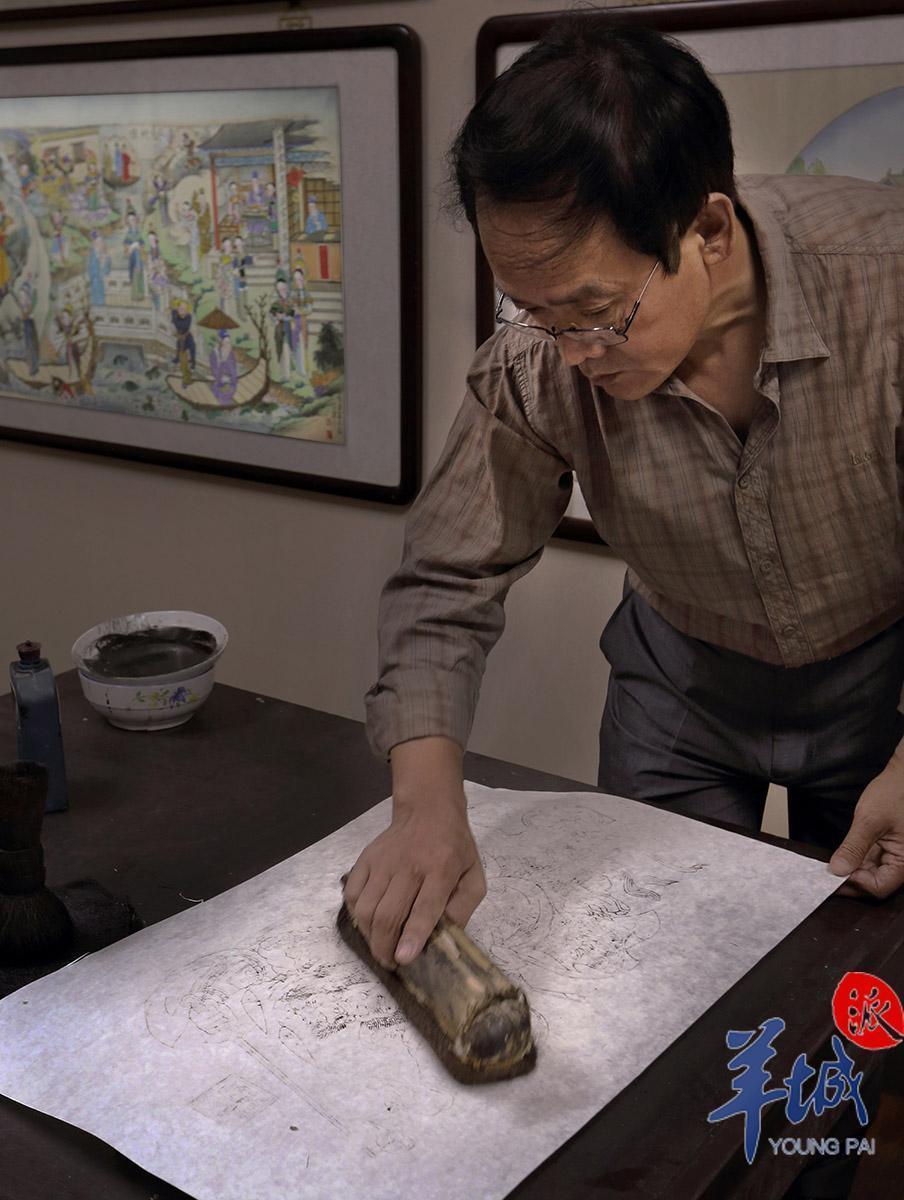
The first woodblock New Year painting museum in Yangliuqing Town holds a series of activities “Appreciating New Year paintings and observing folk customs” every year in the first month of the museum.
The northern folk houses in the exhibition hall on the first floor of the museum are posted on the stove, which represents the sayings of good things from heaven and the safety of the land; a big carp that represents more than a year and has a lively and vivid shape; a painting of the Three Stars of Fu Lu Shou is posted on the middle of the main hall. Bless the whole family;
On the living rooms on both sides, the mother-in-law lives in the upper house, and the New Year pictures with educational significance; the daughter-in-law lives in the lower house, and the New Year pictures with many children and blessings; the kang is covered with a strong local atmosphere. Visitors to the museum can also experience the production process of woodblock New Year pictures.
Walking out of the museum, what I imitated the deepest is the gorgeous and vividness of Yangliu Youth New Year pictures, which is unforgettable to the local people.The persistence of the New Year.Komiks 1960 witch cloth draw
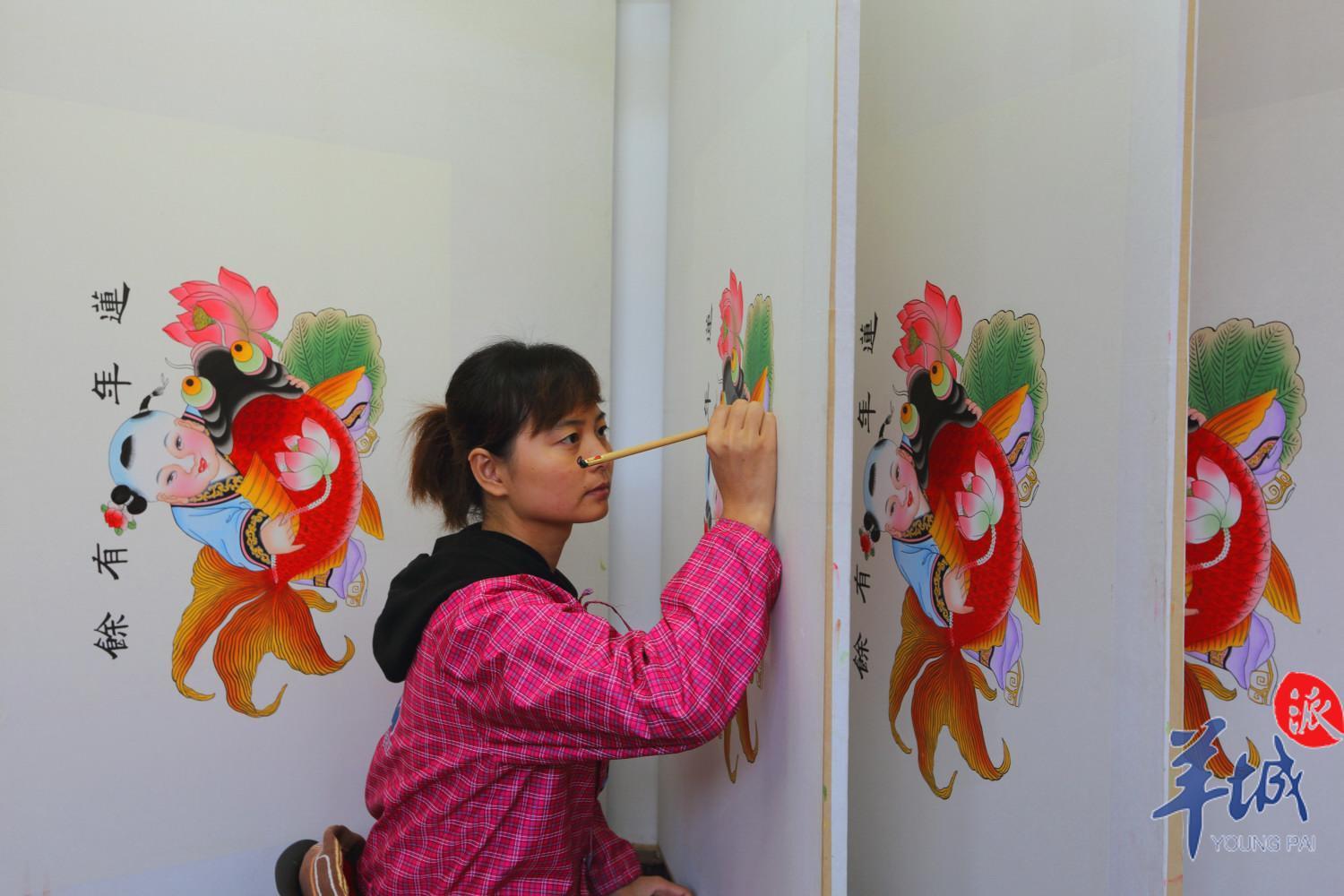 Yangliuqing New Year painting takes a lot of effort to paint by hand. The picture shows the painter of “New Year Painting” focusing on the ending of the classic painting “Years of Years”
Yangliuqing New Year painting takes a lot of effort to paint by hand. The picture shows the painter of “New Year Painting” focusing on the ending of the classic painting “Years of Years”
Now, the improvement and innovation of New Year paintings are new issues faced by older New Year painting craftsmen and young painters. Although it takes time and effort, it can be seen that it has a dense taste of life, rich emotions and aesthetic interests, and moreKomiks 1960 witch clothes drawThe full expression of the culture of the New Year and the dream of Yanhuang for thousands of years.
With more than two thousand years of history, woodblock New Year paintings created by Chinese local artists, it is the oldest type of painting in the world, an encyclopedia of Chinese folk customs and a “living fossil” full of elements of Chinese civilization.
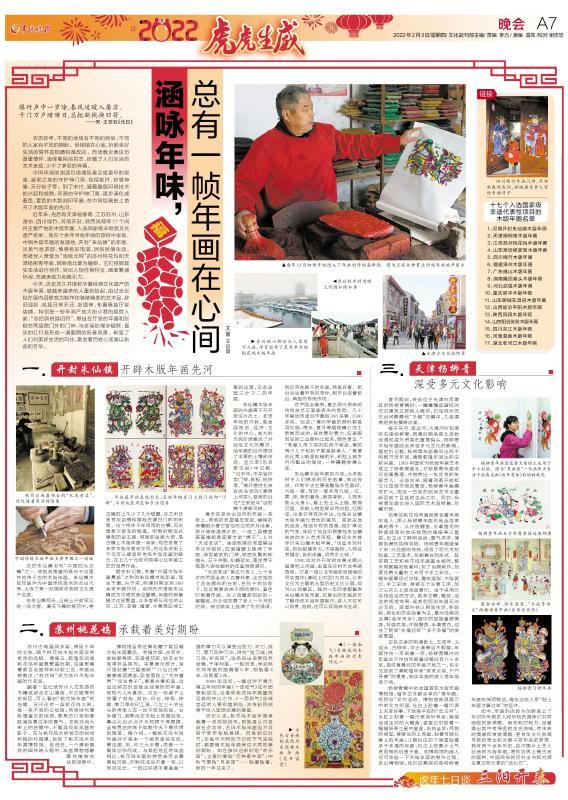 Yangcheng Evening News 202Cinema 1950 witch cloth drawA7 Evening Party Supplement on February 3, 202
Yangcheng Evening News 202Cinema 1950 witch cloth drawA7 Evening Party Supplement on February 3, 202
Channel List of 17 woodblock New Year paintings selected as representative national intangible cultural heritage projects
1. Woodblock New Year paintings in Zhuxian Town, Kaifeng, Henan:
Simple and naive, with a long history. It was born in the Tang Dynasty and was born in the Song Dynasty. Babaylan 1990 cloth draw was the founder of Chinese woodblock New Year paintings.
2. Tianjin Yangliuqing woodblock New Year paintings:
Celebrating the fun of the palace and the interests of the citizens.
 The Yangliu Youth Painting “Hometown Happy Safe” is a Chinese New Year painting with “Yuchenghao Painting”
The Yangliu Youth Painting “Hometown Happy Safe” is a Chinese New Year painting with “Yuchenghao Painting”
3. The woodblock New Year painting of Taohuawu, Suzhou, Jiangsu:
Delicious and neat, rich in color.
Suzhou’s small bridges and flowing water can be painted, giving birth to the beautiful Taohuawu woodblock New Year paintings
4. Yangjiabu woodblock New Year paintings in Weifang, Shandong:
Not bound by nature, rich imagination, and express the theme with generalization, romance, symbolism and meaning; the composition is complete, full and symmetrical; the shape is exaggerated, concise and simple.
5. Sichuan Mianzhu woodblock New Year pictures:
The writing is rich in meaning and colorful.
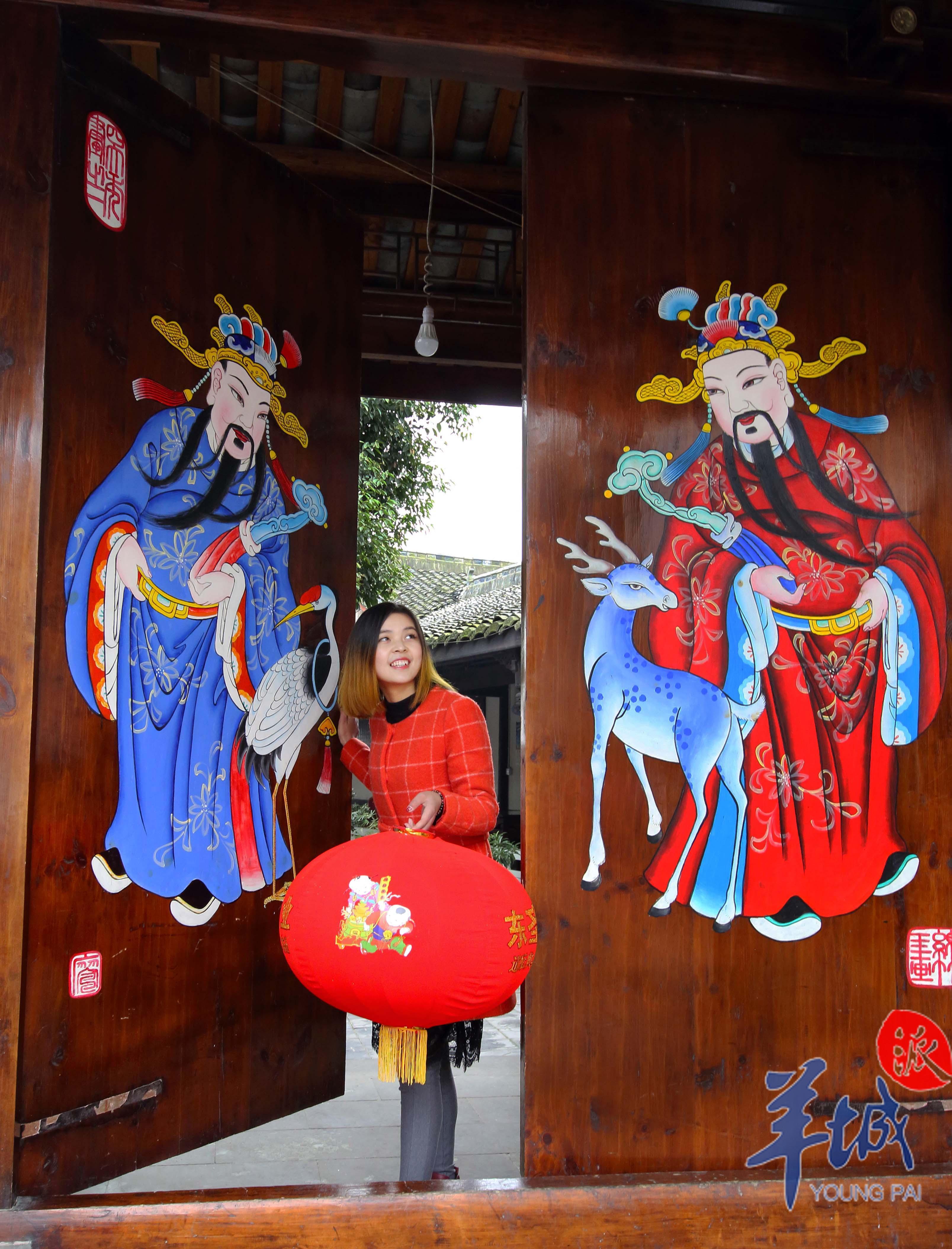
6. Wooden New Year Pictures of Zhangzhou, Fujian:
The region has rich colors, and the themes of gods and Buddhas are rich and diverse.
7. Wooden New Year paintings in Foshan, Guangdong:
The image is delicate, rough and concise, strong and powerful, with a full composition, which expresses its auspiciousness and is highly distinctive.
8. Wooden New Year paintings in Longhui, Hunan:
The colors are unrestrained, orange-red, and the color combination is rounded, with strong sportiness and strong decorative flavor.
9. Hebei Wuqiang Wooden New Year Pictures:
Rough and simple, full of rural atmosphere.
10. Chongqing Liangping Wooden-sheet New Year Pictures:
The shape is vivid and lively, the color contrast is strong, and it is full of lifestyle.
11. Wooden New Year paintings in Dongchangfu, Liaocheng, Shandong:
The composition is simple, the overall feeling is strong, the characters are exaggerated, full and simple; the lines are round and smooth
12. Wooden New Year paintings in Pingyang, Linfen, Shanxi:
The shape is exaggerated, the image is vivid, and the decorative is strong.
13. Shaanxi Komiks 1960 witch cloth drawFengxiang woodblock New Year paintings:
The style is rough and exaggerated, with large blocks of colors, dynamic characters, and powerful.
14. Zhang Qiu woodblock New Year paintings in Yanggu, Shandong:
The composition is plump, well-proportioned and simple.
15. Sichuan Jiajiang Wooden New Year Pictures:
Bright colors and exquisite craftsmanship, and once with Mianzhu New Year PicturesKomiks 1960 witch cloth draw is as famous as Liang Ping’s New Year paintings.
16. Wooden New Year pictures in Huaxian County, Henan Province: The printing process is meticulous and complex, the composition of the picture is balanced and symmetrical, the image is full and solid, and the lines are strong and powerful.
17. Hubei LaohekouKomiks 1960 witch cloth drawwoodBabaylan 1990 cloth draw New Year’s paintings:
The carvings are fine and smooth, the lines are rough and powerful, and the characters are vivid and exaggerated.